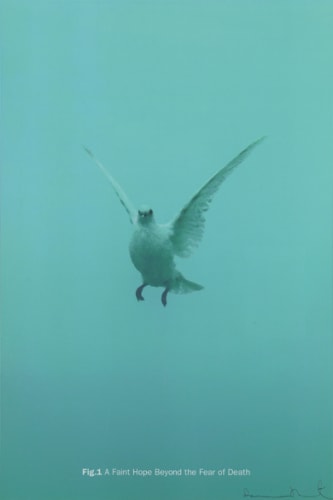Throughout the course of Damien Hirst’s career, belief has been at the heart of his work. Early medicine cabinets such as God, 1989, pitched an unquestioning belief in scientific rationalism – the conviction that pills can cure you – against the more subjective belief in religion and the redemptive healing power of God. This equation gave form to Hirst’s disappointment that a belief in art did not exist in a similar manner to the way that God or science might be unquestionably believed in. Without this belief in art, any sense of meaning is dissipated; it being through the artifice of art and its formal structures that the illusions of life can be recognised.
‘New Religion’, Hirst’s latest project, is grounded in belief and extends this outlook in new directions. The different elements that make up ‘New Religion’ form a chapel dedicated to desire, a desire to keep mortality at bay but which can’t help confront death at the same time. Belief in religion and medicine is grounded in this desire, confirmed here by its representation as art; where, for instance, The Holy Trinity is presented as a pie-chart that through logic attempts to prove the wholly unprovable.

